| Listing 1 - 9 of 9 |
Sort by
|
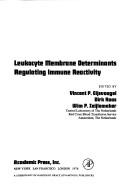
ISBN: 0122337506 0323142478 1299398596 Year: 1976 Publisher: New York
Abstract | Keywords | Export | Availability | Bookmark
 Loading...
Loading...Choose an application
- Reference Manager
- EndNote
- RefWorks (Direct export to RefWorks)
Immunology. Immunopathology --- immunology (XIV.) --- Sect --- Prim --- Binding sites (Biochemistry) --- Cell membranes --- Lymphocytes --- Active site (Biochemistry) --- Bonding sites (Biochemistry) --- Reactive site (Biochemistry) --- Biochemistry --- Immunoglobulin idiotypes --- Immunospecificity --- Congresses
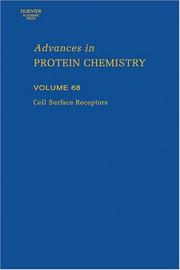
ISBN: 0120342685 9786611010713 1281010715 0080493793 9780080493794 9780120342686 Year: 2004 Publisher: Amsterdam Elsevier Academic
Abstract | Keywords | Export | Availability | Bookmark
 Loading...
Loading...Choose an application
- Reference Manager
- EndNote
- RefWorks (Direct export to RefWorks)
Cell Surface Receptors contains an extensive discussion of cell surface receptors in 11 chapters by experts in their field. As cell surface receptors are involved in almost every aspect of signaling throughout the body, the topic has been of high interest in the community in recent years.Selected Contents:-Structures of Axon Guidance Molecules and Their Neuronal Receptors-Shared Cytokine Signaling Receptor-NKG2D and Related Immunoreceptors-Inonotropic Glutamat Receptor Recognition and Activation-Chemotaxis Receptors and Signaling
Cell receptors. --- Binding sites (Biochemistry) --- Active site (Biochemistry) --- Bonding sites (Biochemistry) --- Reactive site (Biochemistry) --- Biochemistry --- Immunoglobulin idiotypes --- Immunospecificity --- Cell membrane receptors --- Cell surface receptors --- Receptors, Cell --- Cell membranes --- Proteins
Book
ISBN: 1489993606 1461471060 1461471079 Year: 2013 Publisher: New York : Springer,
Abstract | Keywords | Export | Availability | Bookmark
 Loading...
Loading...Choose an application
- Reference Manager
- EndNote
- RefWorks (Direct export to RefWorks)
This book focuses on the function of antibodies in vivo. Recent years have seen an exponential growth in knowledge about the molecular and cellular mechanisms of antibody activity. These new results dramatically changed our view of how antibodies function in vivo. The importance of this class of molecules is demonstrated by the heightened susceptibility to infections of humans and mice with an altered capacity to generate pathogen specific antibody responses. Thus, the majority of our currently available vaccines, such as vaccines against influenza, measles and hepatitis focus on the generation of long lasting antibody responses. Recent evidence from a variety of in vivo model systems and from human patient cohorts has highlighted the exclusive role of cellular Fc-receptors for certain immunoglobulin isotypes and subclasses. With the recent discovery of a human Fc-receptor for IgM all different human immunoglobulin isotypes now have a cellular receptor, providing a feedback mechanism and link between antibodies and the cellular components of the immune system. Moreover it has become clear the complement and Fc-receptor system are tightly connected and regulate each other to ensure a well balanced immune response. Among the immunoglobulin isotypes IgG plays a very important protective role against microbial infections and also as a therapeutic agent to kill tumor cells or autoantibody producing B cells in autoimmune disease. Transfer of our knowledge about the crucial function of Fc-receptors has led to the production of a second generation of therapeutic antibodies with enhanced binding to this class of receptors. Binding of antibodies to Fc-receptors leads to the recruitment of the potent pro-inflammatory effector functions of cells from the innate immune system. Hence, Fc-receptors link the innate and adaptive immune system, emphasizing the importance of both arms of the immune system and their crosstalk during anti-microbial immune responses. Besides this pro-inflammatory activity immunoglobulin G (IgG) molecules are long known to also have an anti-inflammatory function. This is demonstrated by the use of high dose intravenous immunoglobulins as a therapeutic agent in many human autoimmune diseases. During the past five years several new insights into the molecular and cellular pathways of this anti-inflammatory activity were gained radically changing our view of IgG function in vivo. Several lines of evidence suggest that the sugar moiety attached to the IgG molecule is responsible for these opposing activities and may be seen as a molecular switch enabling the immune system to change IgG function from a pro- to an anti-inflammatory activity. There is convincing evidence in mice and humans that aberrant IgG glycosylation could be an important new pathway for understanding the impaired antibody activity during autoimmune disease. Besides this tremendous increase in basic knowledge about factors influencing immunoglobulin activity the book will also provide insights into how these new insights might help to generate novel therapeutic approaches to enhance IgG activity for tumor therapy on the one hand, and how to block the self-destructive activity of IgG autoantibodies during autoimmune disease on the other hand.
Biology --- Health & Biological Sciences --- Microbiology & Immunology --- Antigen-antibody reactions. --- Immunospecificity. --- Binding sites (Biochemistry) --- Active site (Biochemistry) --- Bonding sites (Biochemistry) --- Reactive site (Biochemistry) --- Immunological specifics --- Serological specificity --- Specificity (Immunology) --- Antibody-antigen reactions --- Medicine. --- Immunology. --- Medical microbiology. --- Virology. --- Biomedicine. --- Medical Microbiology. --- Biochemistry --- Immunoglobulin idiotypes --- Immunospecificity --- Antibody diversity --- Antigenic determinants --- Immune recognition --- Antigens --- Immune response --- Immunoglobulins --- Immunology --- Microbiology. --- Medical virology. --- Medical microbiology --- Virology --- Virus diseases --- Microbial biology --- Microorganisms --- Immunobiology --- Life sciences --- Serology --- Microbiology
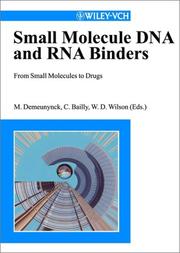
ISBN: 3527305955 Year: 2002 Publisher: Weinheim : Wiley-VCH,
Abstract | Keywords | Export | Availability | Bookmark
 Loading...
Loading...Choose an application
- Reference Manager
- EndNote
- RefWorks (Direct export to RefWorks)
Molecular biology --- Binding sites (Biochemistry) --- Nucleic acids --- Biologie moléculaire --- Sites actifs (Biochimie) --- Acides nucléiques --- 577.213 --- DNA-drug interactions --- Drug-DNA interactions --- DNA-ligand interactions --- Active site (Biochemistry) --- Bonding sites (Biochemistry) --- Reactive site (Biochemistry) --- Immunoglobulin idiotypes --- Immunospecificity --- Reproduction of inheritance information. Replication --- DNA-drug interactions. --- Binding sites (Biochemistry). --- 577.213 Reproduction of inheritance information. Replication --- Polynucleotides --- Biomolecules --- Molecular biochemistry --- Molecular biophysics --- Biochemistry --- Biophysics --- Systems biology --- Drug interactions --- Molecular biology. --- Nucleic acids.
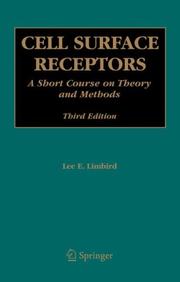
ISBN: 1280609125 9786610609123 0387230807 0387230696 1441935711 Year: 2005 Publisher: New York : Springer Science+Business Media,
Abstract | Keywords | Export | Availability | Bookmark
 Loading...
Loading...Choose an application
- Reference Manager
- EndNote
- RefWorks (Direct export to RefWorks)
Cell Surface Receptors: A Short Course on Theory and Methods, 3rd Edition, links theoretical insights into drug-receptor interactions described in mathematical models with the experimental strategies to characterize the biological receptor of interest. The study of receptors has changed considerably over the period of the publication of the three editions of this book. The cloning of several genomes makes it unlikely that preparations of receptors now or in the future will arise from their purification as trace proteins from native tissues, but rather from a myriad of molecular approaches. Nonetheless, understanding the molecular mechanisms and ultimately the in vivo biology of these receptors means that investigators will engage in molecular, cellular and ultimate in vivo strategies. It should be of value to investigators who want to identify, characterize and understand the biology of a receptor of interest. This book is primarily targeted to researchers and graduate students in the fields of molecular pharmacology, receptors, receptor biology, and signal transduction. These courses are variously found in pharmacology, molecular and cell biology, biochemistry and neuroscience. Researchers in the pharmaceutical industry working on bringing new drugs to market will also find this book useful.
Cell receptors. --- Binding sites (Biochemistry) --- Récepteurs cellulaires. --- Sites actifs (Biochimie) --- Cell membrane receptors --- Cell surface receptors --- Receptors, Cell --- Cell membranes --- Proteins --- Active site (Biochemistry) --- Bonding sites (Biochemistry) --- Reactive site (Biochemistry) --- Biochemistry --- Immunoglobulin idiotypes --- Immunospecificity --- Toxicology. --- Cytology. --- Biochemistry. --- Medicine. --- Neurosciences. --- Pharmacology/Toxicology. --- Cell Biology. --- Biochemistry, general. --- Molecular Medicine. --- Chemicals --- Medicine --- Pharmacology --- Poisoning --- Poisons --- Neural sciences --- Neurological sciences --- Neuroscience --- Medical sciences --- Nervous system --- Clinical sciences --- Medical profession --- Human biology --- Life sciences --- Pathology --- Physicians --- Biological chemistry --- Chemical composition of organisms --- Organisms --- Physiological chemistry --- Biology --- Chemistry --- Cell biology --- Cellular biology --- Cells --- Cytologists --- Toxicology --- Composition --- Health Workforce --- Recepteurs cellulaires.
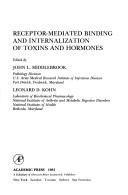
ISBN: 0124948502 0323141331 1299363059 9780124948501 Year: 1981 Publisher: New York (N.Y.): Academic press,
Abstract | Keywords | Export | Availability | Bookmark
 Loading...
Loading...Choose an application
- Reference Manager
- EndNote
- RefWorks (Direct export to RefWorks)
Human biochemistry --- Endocytosis --- Binding sites (Biochemistry) --- Hormone receptors --- Toxins --- Congresses --- Receptors --- 577.171 --- -Endocytosis --- -Hormone receptors --- -Toxins --- -615.9 --- Natural toxicants --- Toxicants, Natural --- Toxins and antitoxins --- Antigens --- Metabolites --- Poisons --- Antitoxins --- Detoxification (Health) --- Hormones --- Receptors, Hormone --- Cell receptors --- Absorption (Physiology) --- Cell physiology --- Active site (Biochemistry) --- Bonding sites (Biochemistry) --- Reactive site (Biochemistry) --- Biochemistry --- Immunoglobulin idiotypes --- Immunospecificity --- General studies of hormones --- -Congresses --- General toxicology. General studies of poisons and poisoning (intoxication) --- 615.9 General toxicology. General studies of poisons and poisoning (intoxication) --- 577.171 General studies of hormones --- 615.9 --- Receptors&delete& --- Endocytosis - Congresses --- Binding sites (Biochemistry) - Congresses --- Hormone receptors - Congresses --- Toxins - Receptors - Congresses
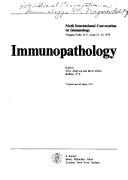
ISBN: 3805513720 Year: 1973 Publisher: Basel Karger
Abstract | Keywords | Export | Availability | Bookmark
 Loading...
Loading...Choose an application
- Reference Manager
- EndNote
- RefWorks (Direct export to RefWorks)
Binding sites (Biochemistry) --- Immunospecificity --- Antigen-Antibody Reactions --- Binding Sites, Antibody --- Cell Biology. --- Immunoglobulins --- Cellular Biology --- Cytology --- Biologies, Cell --- Biologies, Cellular --- Biology, Cell --- Biology, Cellular --- Cell Biologies --- Cellular Biologies --- Antibody Binding Sites --- Paratopes --- Antibody Binding Site --- Binding Site, Antibody --- Paratope --- Immunoglobulin Variable Region --- Antigen Antibody Reactions --- Antigen-Antibody Reaction --- Reaction, Antigen-Antibody --- Reactions, Antigen-Antibody --- AC133 Antigen --- Antibodies --- Antigens --- Immunological specifics --- Serological specificity --- Specificity (Immunology) --- Antibody diversity --- Antigenic determinants --- Immune recognition --- Active site (Biochemistry) --- Bonding sites (Biochemistry) --- Reactive site (Biochemistry) --- Biochemistry --- Immunoglobulin idiotypes --- Immunoglobulin --- Globulins, Immune --- Immune Globulin --- Immune Globulins --- Globulin, Immune --- Genes, Immunoglobulin --- Congresses --- Immunology. Immunopathology --- Cell Biology
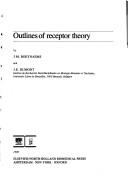
ISBN: 0444801316 9780444801319 Year: 1980 Publisher: Amsterdam Elsevier
Abstract | Keywords | Export | Availability | Bookmark
 Loading...
Loading...Choose an application
- Reference Manager
- EndNote
- RefWorks (Direct export to RefWorks)
Histology. Cytology --- Molecular biology --- Binding sites --- Models, Theoretical --- Binding sites (Biochemistry) --- Ligands (Biochemistry) --- Cell receptors --- MODELS, THEORETICAL --- BINDING SITES --- Binding Sites. --- Models, Theoretical. --- Biochemistry --- Cell membrane receptors --- Cell surface receptors --- Receptors, Cell --- Cell membranes --- Proteins --- Active site (Biochemistry) --- Bonding sites (Biochemistry) --- Reactive site (Biochemistry) --- Immunoglobulin idiotypes --- Immunospecificity --- Binding Site --- Combining Site --- Combining Sites --- Site, Binding --- Site, Combining --- Sites, Binding --- Sites, Combining --- Protein Binding --- Protein Interaction Mapping --- Cell receptors. --- Binding sites (Biochemistry). --- Ligands (Biochemistry). --- Binding Sites --- Experimental Model --- Experimental Models --- Mathematical Model --- Model, Experimental --- Models (Theoretical) --- Models, Experimental --- Models, Theoretic --- Theoretical Study --- Mathematical Models --- Model (Theoretical) --- Model, Mathematical --- Model, Theoretical --- Models, Mathematical --- Studies, Theoretical --- Study, Theoretical --- Theoretical Model --- Theoretical Models --- Theoretical Studies --- Computer Simulation --- Systems Theory --- Biochemical phenomena
Book
ISBN: 0127225609 0323144535 1299453171 9780127225609 Year: 1977 Publisher: New York (N.Y.): Academic press
Abstract | Keywords | Export | Availability | Bookmark
 Loading...
Loading...Choose an application
- Reference Manager
- EndNote
- RefWorks (Direct export to RefWorks)
Molecular biology --- Nucleic acids --- Binding sites (Biochemistry) --- Biochemical genetics --- Proteins --- Molecular Biology --- Binding Sites --- Nucleic Acides --- Congresses --- Nucleic Acids. --- Proteins. --- Binding Sites. --- Molecular Biology. --- -Biochemical genetics --- -Nucleic acids --- -Proteins --- -Proteids --- Biomolecules --- Polypeptides --- Proteomics --- Polynucleotides --- Chemical genetics --- Biochemistry --- Molecular genetics --- Active site (Biochemistry) --- Bonding sites (Biochemistry) --- Reactive site (Biochemistry) --- Immunoglobulin idiotypes --- Immunospecificity --- Biochemical Genetics --- Biology, Molecular --- Genetics, Biochemical --- Genetics, Molecular --- Molecular Genetics --- Biochemical Genetic --- Genetic, Biochemical --- Genetic, Molecular --- Molecular Genetic --- Binding Site --- Combining Site --- Combining Sites --- Site, Binding --- Site, Combining --- Sites, Binding --- Sites, Combining --- Protein Binding --- Protein Interaction Mapping --- Gene Products, Protein --- Gene Proteins --- Protein Gene Products --- Proteins, Gene --- Molecular Mechanisms of Pharmacological Action --- Acids, Nucleic --- Congresses. --- Genetic Phenomena --- -Congresses --- Nucleic Acids --- Protein --- Nucleic Acid --- Acid, Nucleic --- Nucleic acids - Congresses --- Binding sites (Biochemistry) - Congresses --- Biochemical genetics - Congresses --- Proteins - Congresses --- Molecular Biology - congresses --- Binding Sites - congresses --- Proteins - congresses --- Nucleic Acides - congresses
| Listing 1 - 9 of 9 |
Sort by
|

 Search
Search Feedback
Feedback About UniCat
About UniCat  Help
Help News
News